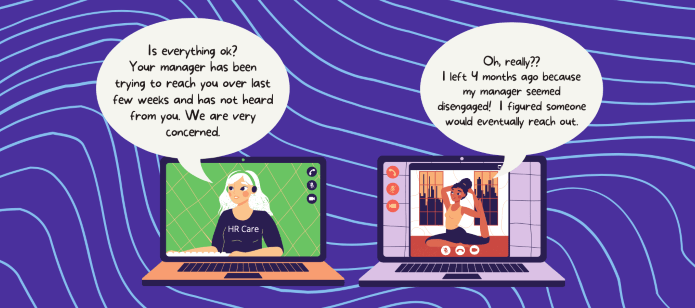It’s hard to imagine that already a year has passed and the world is still dealing with a devastating pandemic. The disruptive effects the pandemic has had in the business world continues to take its course seemingly without end. One of the most impactful changes employers are facing is the future of the workplace as we know it, especially for businesses that have had to make the remote working experience a reality over the last year.
It used to be that working from home was not for everyone. However, despite the forced evolution, that remains the case. Nevertheless, even after the world recovers, we must all wonder about what the future of the workplace will look like. Much of the workforce has been forced to evolve rapidly and meet the moment by embracing a home-based work environment, full of its own set of challenges. Speaking of challenges, it’s also important to talk about the challenges (and opportunities) managers face when supervising remote employees. As if it isn’t enough to manage people altogether, now the remote work experience gets added to the fold for an even greater task.
To better explain the challenges, I’d like to share a true story that I recently learned about: An HR Representative from a global company gets a meeting request from [Bob] a manager she supports with a specific employee’s name in the subject line. Here’s a paraphrased script of their conversation:
HR Manager: Hi Bob, how can I help you?
Bob: Hi. It’s been weeks since I last heard from [Employee] Suzie. I’d like to solicit HR’s help at this point.
HR Manager: When was the last time you heard from her?
Bob: Oh, I can’t really remember… it’s been a few months. Unfortunately, I’ve been incredibly busy, but I’ve emailed Suzie several times and have not heard from her. I left her a voicemail message last week, but have not heard back. I am concerned.
HR Manager: Okay, here’s what I’d like to do. I’m going to overnight her a letter to check on her and inform her you have been trying to reach her and are concerned. I’ll ask her to contact us ASAP.
Several days later, the HR Rep and the employee finally connect and their interaction went something like this:
HR Manager: Hi Suzie. Is everything okay? Your manager has been trying to get a hold of you for the last few weeks and hasn’t heard from you, and we are concerned.
Suzie: Really? I left 4 months ago because I felt like the manager was disengaged. I figured someone would eventually reach out.
😀
This obviously is an extreme example, and we used a comic to add humor, but the reality is that this manager’s lack of engagement and oversight kept an employee who walked off the job on the company payroll, costing the company thousands of dollars in wages.
In conclusion, managing a remote workforce will be a new experience for many managers, but just as if they are managed onsite, a manager’s responsibility does not go away simply because the employee works from home. On the contrary, it is far more critical, especially when you consider other elements that may be competing for a remote employee’s attention and can negatively impact their work performance. Things such as sharing a home office with others, loud pets, crying kids, noisy neighborhoods, etc., all while trying to put on their best performance on video conferences throughout the day.
How is your company addressing this? Are you struggling to supervise your remote staff effectively?
There are several things that can and should be implemented to help managers address and overcome the challenges of supervising the fast-growing remote workforce, which include:
- Ask for help — Reach out to your own manager or HR. Share your challenges and ask for support or additional training.
- Establish structure and rules of engagement — Setup recurring 1:1 check-ins as frequently as needed and set expectations from the start. Make sure your employees know how to best reach you during the day.
- Provide multiple communication means — Email is simply not enough. Use the phone and video conference more so. These will allow you to get additional context to how you communicate (gestures, tone, body language) which are super useful to eliminate miscommunication and misunderstandings altogether.
- Provide opportunities for social interaction — Host trainings, feedback loops, virtual townhall meetings, and even happy hours. Promote activities that promote collaboration and avoid isolation.
- Offer encouragement and emotional support — Ask open-ended questions: How are you doing? What’s new? How can I help you? These provoke open dialogue to help you assess situations with your employees. Don’t be afraid to ask follow-up questions and be sure to read between the lines.
